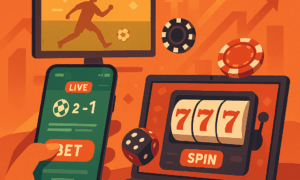Bluffing. It’s as old as games themselves. While it is often associated with the infallible poker faces of the most skilled poker players today, bluffing has actually been used in a variety of different sports.
Bluffing Isn’t Just for Poker
Players and bettors alike know that there is always a strategy to follow throughout the course of a game. There is an array of factors at play when it comes to winning, such as short-term or long-term planning, offense or defense positions, and mental management.
Whether it’s the best way to make a goal, defeat an opponent, or rack up points, every sport has its strategy. A common strategic element in sports is the art of deception, where players trick their opponents into thinking something is true when it is not.
When most people think of bluffing they think of the poker strategy. This can be defined as pretending to have a stronger hand than opponents with the hope that they will fold. Bluffing is one of the title’s many special terms and definitions, however, it is not unique to it. Many athletes have adopted the tactic and used it to their advantage. For example, in football, there are several moves that take opponents by surprise.
The Nutmeg, for one, is a common practice where a player makes an opponent think they are dribbling the ball, but actually kick it between their opponent’s legs to get past them. Lionel Messi holds the title of the ultimate nutmeg master, his most famous being when he nutmegged Atletico’s Filipe Luis during a match between Barcelona and Madrid.
Another well-known sporting bluff is the hesitation dribble in basketball. To perform the hesitation dribble successfully, players have to act as if they’re going to keep moving forward, but charge past defenders to shoot or pass the ball. This is a favorite move of Steph Curry, who is well-known to take a game over in crunch time as the Golden State Warriors Guard.
To Bluff or Not to Bluff
While people have been playing mental and physical sports since the dawn of time, it wasn’t until John von Neumann discovered the favorable probability of bluffing in the 1920s, that people began to think of it as a scientific phenomenon. To be more specific, he applied the technique of bluffing to the numerous possibilities latent in game theory, which determined when bluffing was useful to a player, depending on specific circumstances. Von Neumann compared poker’s bluffing to the logic of chess and the probability of roulette, and with the data he collected, provided those who followed his work with logical advice on when the decision to bluff is the optimal strategy.
As Von Neumann often mentioned in his studies, it’s important not to bluff often. That’s because bluffing is something opponents shouldn’t expect, so when it becomes predictable that a player will bluff, the same way that if Steph Curry did his hesitation dribble every time, then the technique becomes less effective.
Likewise, bluffing is only useful for seasoned players. If a player doesn’t know how to bluff, then they could risk giving themselves away, which can be much riskier. Meanwhile, when playing with someone who is inexperienced and unsure of how to judge whether someone is bluffing, it can often backfire on the bluffer because inexperienced players are less predictable and willing to take bizarre risks because they don’t know better.
With high-risk moments, experts tend to agree that it’s not wise to bluff because there is a lot more to lose. Bluffing tends to happen when the stakes are a bit lower and players aren’t as invested in winning or losing.
Ultimately, the most adequate bluffing conditions are when playing with people with the same expertise or higher, when players gather enough information to make an educated guess about their opponents’ intentions, and when the risks are low to medium.









